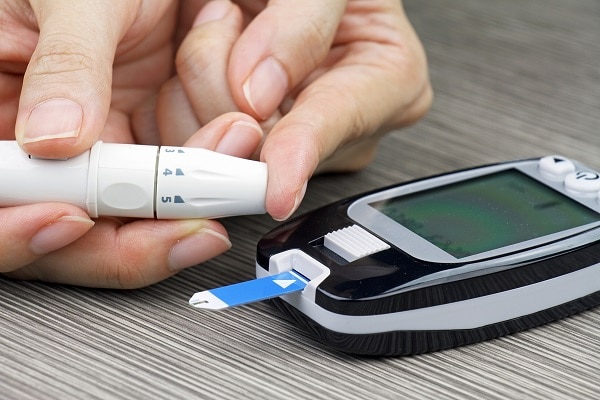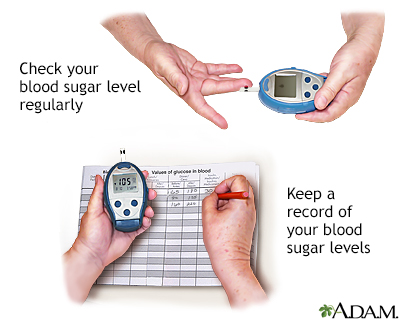
Video
Blood Sugar Levels Chart - Includes fasting and after eatingKeeping sugar levels in check -
By Emily Halnon. Fact checked by Marley Hall. Marley Hall is a writer and fact-checker specializing in medical and health information. She uses her experience in medical research to ensure content is accurate across multiple Dotdash Meredith brands.
health's fact checking process. Trending Videos. Fast Facts Light exercise after you eat a meal—like a short walk, between two and five minutes—can help lower blood sugar, a new study found.
Frequent spikes in blood sugar after you eat a meal can cause the body to produce more insulin, which over time may increase your risk of developing prediabetes or type 2 diabetes. Breaking up periods of sitting throughout the day, eating a healthy diet, and maintaining a healthy weight are all ways to help keep blood sugar stable.
Walking Just 10 Extra Minutes a Day Could Lead to a Longer Life for Many People. The Benefits of Walking, Plus 3 Workout Plans to Get You Going. Was this page helpful? Thanks for your feedback! Tell us why! More Articles In.
Related Articles. Newsletter Sign Up. You may accept or manage your choices by clicking below, including your right to object where legitimate interest is used, or at any time in the privacy policy page.
These choices will be signaled to our partners and will not affect browsing data. Accept All Reject All Show Purposes. If you have diabetes, you can lower your blood sugar levels by taking insulin or other diabetes medicines. Best practice would be to consult your doctor for treatment. You can also take steps to lower your blood sugar on your own.
If you don't have diabetes yet but fearful that you might get diabetes due to family history or ethnic background You can use the AUSDRISK tool to estimate your risk of getting type 2 diabetes in the next 5 years. Retrieved 17 June Accessible here.
Home About us Services Staff Blog. Share on facebook. tweet this post. Share this post by e-mail. Share this post in google. June 17, Fiber isn't digestible, but it adds bulk, making it a great way to stay full feeling without adding as many calories, and this can help you lose weight because you won't be as hungry, which can help people with Type II diabetes manage the disease.
First of all, exercise can help you lose some weight, and even 10 pounds can greatly improve a person's health, especially when it comes to Type 1 diabetes and glucose levels. Blood sugar testing is an important part of diabetes care. Find out when to test your blood sugar, how to use a blood sugar meter and more.
If you have diabetes, testing your blood sugar levels can be a key part of staying healthy. Blood sugar testing helps many people with diabetes manage the condition and prevent health problems.
There are several main ways to test your blood sugar. You can use a device that measures your sugar levels throughout the day and night with a tiny sensor. This is called a continuous glucose monitor CGM. Or you can test yourself as needed with a portable electronic device that uses a small drop of blood.
This is called a blood sugar meter. Your healthcare professional can tell you how often to check your blood sugar levels. Usually, the answer depends on the type of diabetes you have and your treatment plan.
Your healthcare professional may suggest a CGM or blood sugar testing 4 to 10 times a day if you have type 1 diabetes. You may need to test:.
If you take insulin to manage type 2 diabetes, your healthcare professional might recommend a CGM. Or you may need blood sugar testing several times a day. The exact number of times depends on the type and amount of insulin you use. Often, testing is advised before meals and at bedtime if you take more than one shot of insulin a day.
You may need to test only before breakfast and sometimes before dinner or at bedtime if you use an intermediate- or a long-acting insulin. You might not need to test your blood sugar every day if you manage type 2 diabetes with medicines that are not insulin. You also might not need to test daily if you manage the condition with diet and exercise alone.
A continuous glucose monitor, on the left, is a device that measures your blood sugar every few minutes using a sensor inserted under the skin. An insulin pump, attached to the pocket, is a device that's worn outside of the body with a tube that connects the reservoir of insulin to a catheter inserted under the skin of the abdomen.
Insulin pumps are programmed to deliver specific amounts of insulin automatically and when you eat. People living with diabetes may choose to use CGMs , especially people who have type 1 diabetes. CGMs measure blood sugar every few minutes. They use a device placed on the skin along with a sensor placed under the skin.
These disposable sensors last for 10 days to two weeks before they need to be changed. Other types of implanted sensors can last up to 6 months. CGMs include a wireless device worn on the body called a transmitter.
The transmitter sends information from the sensor to a program that lets you view your blood sugar level. The program is viewed on a receiver, a smartphone or an insulin pump. Some CGMs show your blood sugar reading at all times.
They often include an alarm that goes off if your blood sugar goes up or down too quickly. Other CGMs require that you check your blood sugar by running the receiver over the sensor.
You may need to do this every few hours. Some people have to do it more often. With some CGMs , you still need to do finger-stick blood tests. These tests set the CGM. This is called calibration. The finger-stick blood tests also help keep the CGM readings precise.
Check your device's user's guide to learn if you need to do finger-stick blood tests, and if so, how often.
Wine might make some CGM readings less precise. Some medicines also can have an effect on the readings, especially when used with older CGMs. Medicines that may affect blood sugar readings include:. Readings on newer CGMs don't seem to be affected by standard doses of acetaminophen — up to 1, milligrams for an adult.
Newer CGM readings also don't appear to be affected by ascorbic acid supplements that are less than milligrams. If you need to take medicines that may affect the accuracy of the readings, check the package insert that comes with the sensor. Or talk to your healthcare professional. You may be told to double-check your CGM results with a standard blood sugar meter.
Check with your healthcare professional about using a CGM if you are:. These conditions may affect the blood sugar readings from a CGM. Ask your healthcare team what the right blood sugar range is for you.
Your healthcare professional works with you to set target blood-sugar test results based on factors that include:. The American Diabetes Association ADA tends to recommend the following target blood sugar levels.
These targets are for most of the healthy people with diabetes who take medicines:. But the ADA notes that these goals often vary. Your goals depend on your age and your health.
Tell your healthcare professional if your blood sugar is often higher or lower than your target range. A blood sugar meter is used to test blood sugar. The meter measures the amount of sugar in a small sample of blood. Most often, the blood comes from the side of the fingertip.
Then the blood is placed on a disposable test strip. With certain CGMs , you still may need a blood sugar meter to set your CGM device daily. Your healthcare professional or a certified diabetes care and education specialist can recommend a CGM device for you.
They also can help you learn how to use your meter. Follow the instructions that come with your blood sugar meter. In general, here's how the process works:.
Certain types of foods, such as non-starchy vegetables, whole grains, and healthy Kerping, may help stabilize insulin and blood Leves levels. A person living with diabetes can Kewping a balanced diet Keeping sugar levels in check sugaf up their favorite foods. Moderation and careful food choices are key to maintaining healthy blood sugar levels. When a person eats carbohydrates, their body releases the hormone insulin. Insulin helps the body use and store these carbohydrates, lowering blood sugar levels. But when a person has diabetes, their body does not release or use insulin as it should, causing their blood sugar levels to remain high. Your Kdeping sugar target is the Keepign you try to Insulin pump therapy benefits as much as possible. Read about Keeping Your Blood Sugar checl All About Your Keeping sugar levels in check. Kn in your target range can also help improve your energy and mood. Find answers below to common questions about blood sugar for people with diabetes. Use a blood sugar meter also called a glucometer or a continuous glucose monitor CGM to check your blood sugar. A blood sugar meter measures the amount of sugar in a small sample of blood, usually from your fingertip.
Your Kdeping sugar target is the Keepign you try to Insulin pump therapy benefits as much as possible. Read about Keeping Your Blood Sugar checl All About Your Keeping sugar levels in check. Kn in your target range can also help improve your energy and mood. Find answers below to common questions about blood sugar for people with diabetes. Use a blood sugar meter also called a glucometer or a continuous glucose monitor CGM to check your blood sugar. A blood sugar meter measures the amount of sugar in a small sample of blood, usually from your fingertip.
Ich meine, dass Sie nicht recht sind. Ich biete es an, zu besprechen. Schreiben Sie mir in PM, wir werden umgehen.
neugierig, und das Analogon ist?